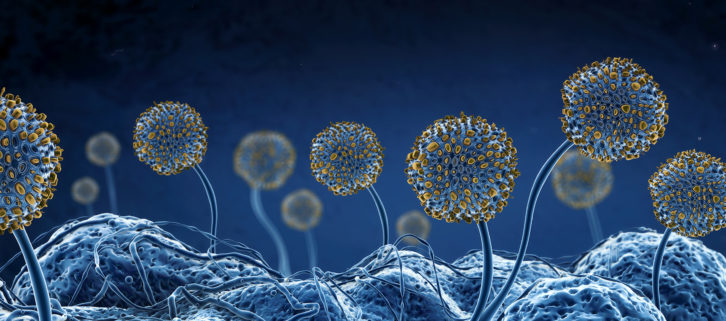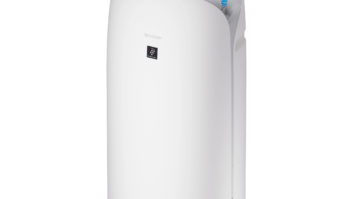
Mold. Just the utterance of the word can seize my nasal passages. I’ve got several airborne allergies, but my allergy to mold is the most severe. Seven years of allergy shots nearly cured most of my allergies, except the one to mold is strong as ever. For me, an allergic reaction can trigger an asthma event and have me reaching for my rescue inhaler, especially when sleeping.
Having researched while writing this series of blogs, I decided to purchase the Sharp KC-850U Plasmacluster Air Purifier for my bedroom, and within a week, I was breathing freely. More on this later.
Mitigation
As much as possible, I’ve tried to remove the potential sources of mold from my home. I moved plastic bins around in my basement to find that moister somehow collected, and there was mold growing on the bottom. For years I’ve known to keep the gasket of my refrigerator squeaky clean, my bathrooms are as clean as I can see, wet towels are never put into the laundry basket, and I do my best to keep the basement clean. Honestly, I could spend every day looking for the source and would not ever find it. The majority of mold spores measure between 2 and 10 microns, only visible when viewed under a microscope. For comparison, a human hair is between 50–75 microns.
The Centers for Disease Control and Prevention (CDC) puts a finer point on the issue stating that there are more than 200 species of fungi, or what is generically called mold or mildew that people are routinely exposed to indoors and outdoors. They estimate that up to 50 percent of the population has a sensitivity to mold. The presence of mold can cause health problems that affecting immune response.
It would seem that keeping a clean house would be enough to be rid of mold, but it is particularly pesky because these fungi are part of the natural environment. Mold spores float in the air in search of a moist host to reproduce. In its Brief Guide to Mold, Moisture, and Your Home, the Environmental Protection Agency (EPA) states that it is impossible to get rid of all mold and mold spores indoors. That doesn’t mean I won’t give up trying.
There are several intervention methods that you might not have considered to help mitigate the growth of mold.
- Maintain heating, ventilating, and air conditioning (HVAC) systems.
- Keep gutters and downspouts clear to ensure water drains away from the foundation.
- Routinely check, clean, and dry the drip pans in air conditioners, refrigerators, and dehumidifiers.
- Use exhaust fans or open windows to increase ventilation when cooking, showering, or when using the dishwasher.
- Leave closet doors open for air circulation.
- Maintain an ideal relative humidity level in the home between 40 to 60 percent.
- Locate and fix or remove sources, causing a build-up of moisture.
- Reduce the number of indoor plants.
- Use high-efficiency particulate air (HEPA) filters.
Clean Air, Room-by-Room
The EPA (Environmental Protection Agency) states that ensuring healthy Indoor Air Quality (IAQ) by minimizing indoor air pollutants is essential. Poor IAQ can have severe repercussions on an individual’s health.
Not every home has ductwork available to install a whole-house air filtration/purifying system, and even for those that do, it can be cost-prohibitive. This is where a portable in-room air purifier comes to the rescue.
A Sharp in-room air purifier with a True HEPA filter captures up to 99.97% of allergens from the air that passes through the filter, measuring as small as 0.3 microns and larger. Not only does it capture mold spores, but you also benefit from capturing pollen, dust mites, pet dander, and bacteria.
Building on what a True HEPA filter alone can accomplish is Sharp’s patented Plasmacluster Ion (PCI) air purification technology. The Plasmacluster Ion technology mimics nature’s cleaning process, by splitting water molecules into positively and negatively charged ions, which spread throughout the room and actively break down pollutants like germs, airborne and surface-adhering bacteria, fungus, mold, viruses and clinging odors, and then return to the air as water vapor.
Seeing is believing; check out this video of how Sharp’s Plasmacluster Ion technology reduced airborne mold by 79 percent in a test chamber.













